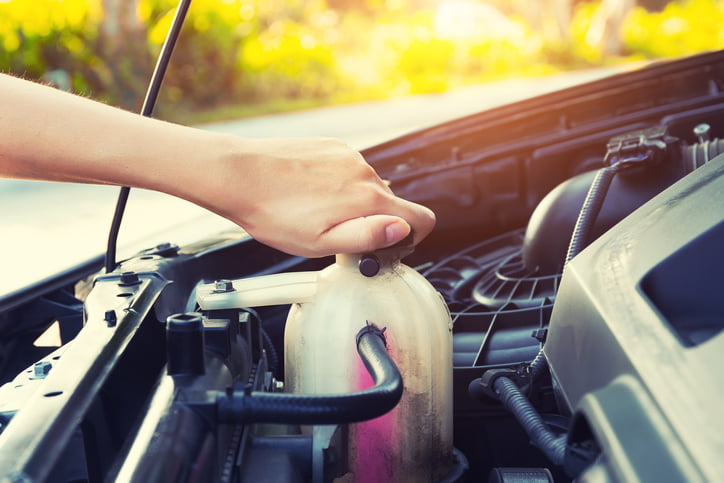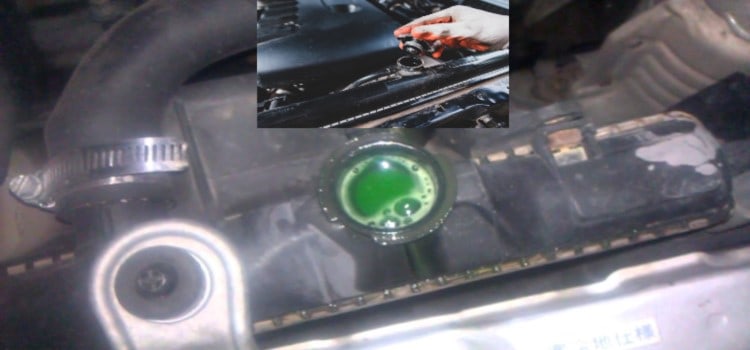Last Updated on February 4, 2023 by Ryan
A bad thermostat can cause coolant to bubble for two reasons. First, if the thermostat is stuck in the closed position, it will not allow the coolant to circulate properly. This can cause the coolant to become overheated and start to boil.
Second, if the thermostat is stuck in the open position, it will allow too much coolant to flow into the engine. This can also cause the coolant to become overheated and start to boil.
If your car’s coolant is bubbling, it could be a sign of a bad thermostat. The thermostat is responsible for regulating the flow of coolant and keeping the engine at a consistent temperature. If it’s not working properly, the coolant can start to boil and bubble.
This can cause all sorts of problems, from overheating to engine damage. So if you notice your coolant bubbling, make sure to get it checked out by a mechanic right away.
Overheating After Replacing Radiator, Pump, Thermostat? Burp Coolant to Remove Air Pockets!
Would a Bad Thermostat Cause Coolant to Boil?
A bad thermostat can cause coolant to boil. This is because the thermostat controls the flow of coolant through the engine. If the thermostat is stuck open, coolant will flow too rapidly and will not have time to properly heat up, causing it to boil.
Additionally, a faulty thermostat can cause the engine to overheat, which can also lead to boiling coolant. To prevent this from happening, it is important to have your thermostat checked regularly and replaced if necessary.
Can a Bad Thermostat Cause Coolant Bubbling?
A thermostat is a temperature controlled switch that regulates the flow of coolant in an engine. The thermostat ensures the engine stays at operating temperature by opening and closing to regulate the amount of coolant flowing through it. If the thermostat becomes stuck in the closed position, it will restrict coolant flow and cause the engine to overheat.
If the thermostat becomes stuck in the open position, it will cause coolant to constantly circulate and may result in coolant bubbling.
What Causes Coolant to Bubble?
There are a few reasons that could cause your coolant to bubble. One reason is if the coolant is old and has broken down, it can no longer properly do its job and will need to be replaced. Another reason could be a leak in the cooling system which is allowing air into the system and causing the coolant to bubble.
Lastly, if the water pump isn’t working properly it can also cause the coolant to bubble as it won’t be circulating properly. If you notice your coolant bubbling, you should take your car to a mechanic to have it checked out as soon as possible.
What are the Symptoms of a Bad Coolant Thermostat?
A coolant thermostat is a device that regulates the flow of coolant in a vehicle. It is usually located near the engine and is responsible for maintaining the engine temperature within a certain range. If the thermostat malfunctions, it can cause a number of problems.
The most common symptom of a bad coolant thermostat is overheating. If the thermostat gets stuck in the closed position, it will restrict the flow of coolant and cause the engine to overheat. The temperature gauge on the dash may read higher than normal, and the engine may start to steam from under the hood.
Other symptoms of a bad coolant thermostat include poor fuel economy and Engine Performance issues. The engine may run rough or stall frequently if the thermostat is not regulating the coolant properly. You may also notice that your vehicle takes longer to warm up on cold days, as the thermostat will take longer to open and allow hot coolant to circulate through the engine block.
If you suspect that your coolant thermostat might be failing, have it checked by a qualified mechanic as soon as possible.

Credit: www.holtsauto.com
Can a Bad Water Pump Cause Bubbles in Radiator
A water pump is responsible for moving coolant throughout your vehicle’s cooling system. If the pump fails, it can cause a number of problems, one of which is air bubbles in the radiator.
Bubbles in the radiator indicate that there is not enough coolant circulating through the system.
This can lead to overheating, as well as engine damage if left unchecked.
If you notice bubbles in your radiator, it’s important to have your vehicle checked by a mechanic as soon as possible. In some cases, a new water pump may be needed.
What to Do If My Coolant is Boiling
If your coolant is boiling, there are a few things you can do to fix the problem. First, check the level of your coolant and add more if it is low. Next, check for any leaks in the system and repair them if necessary.
Finally, bleed the cooling system to remove any air bubbles that may be causing the issue.
Radiator Bubbling With Cap off
Radiator bubbling with cap off is a sure sign that there’s a problem with your cooling system. It means that coolant is being forced out of the radiator and into the overflow tank. This can happen for a number of reasons, but it’s most likely due to a faulty radiator cap or thermostat.
If you notice your radiator bubbling with the cap off, you should take your car to a mechanic to have it checked out. In the meantime, don’t drive your car too hard or put too much strain on the cooling system. Doing so could cause even more coolant to be forced out of the radiator, exacerbating the problem.
Conclusion
If your car’s coolant is bubbling, it could be a sign that your thermostat is bad. The thermostat regulates the flow of coolant and keeps it at a consistent temperature. If it’s not working properly, the coolant can overheat and cause the engine to fail.



